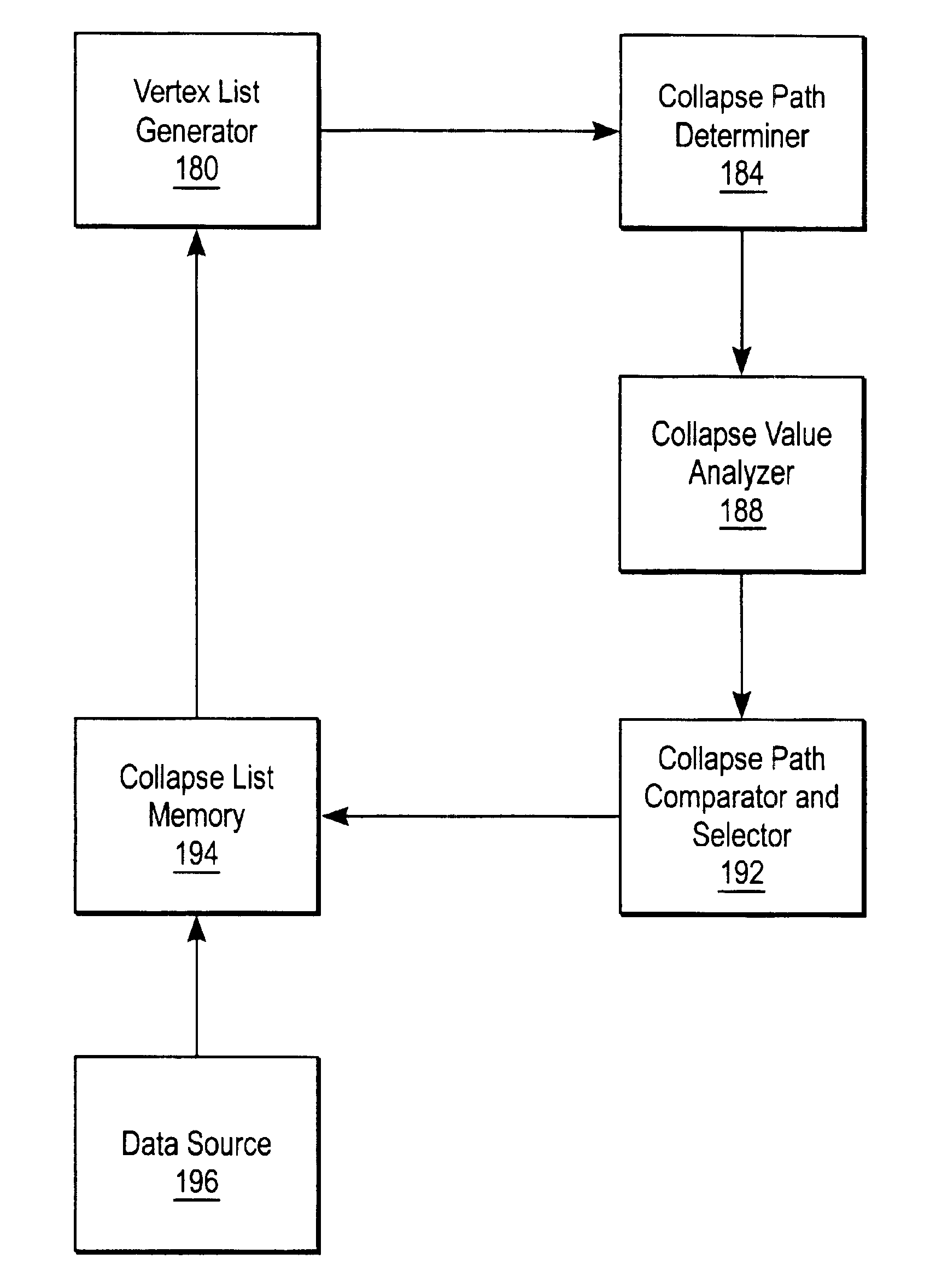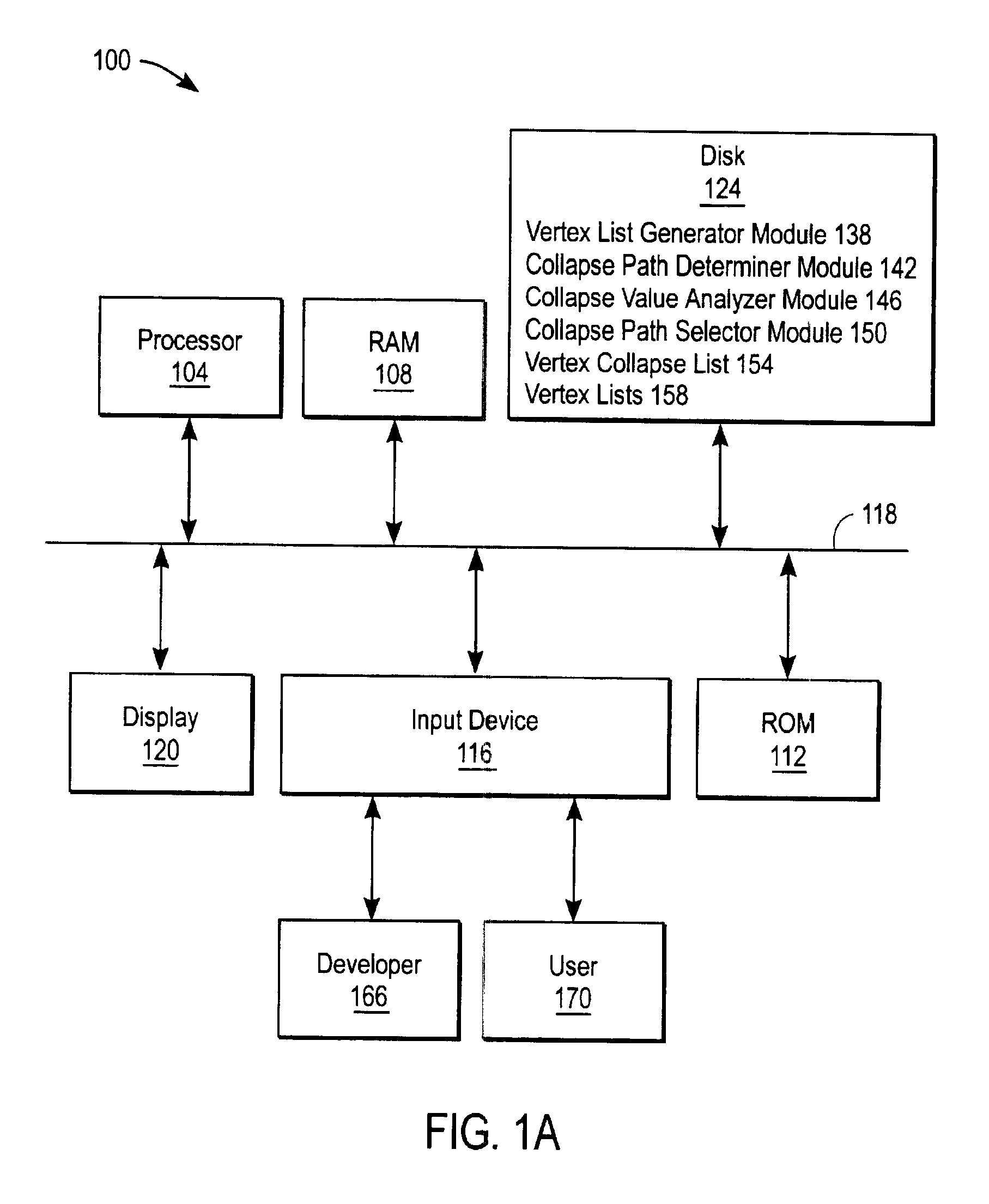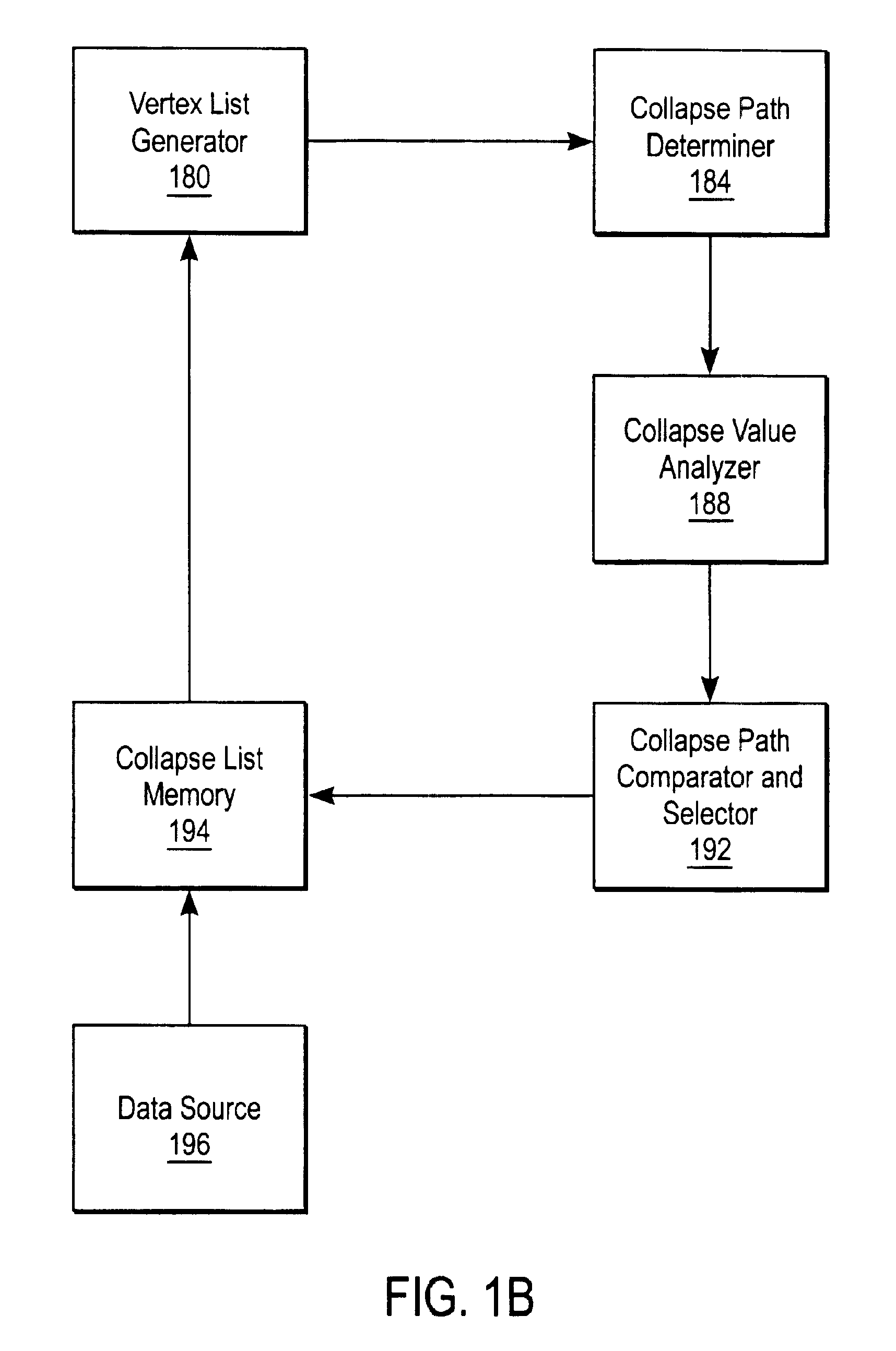Multi-resolution geometry
- Summary
- Abstract
- Description
- Claims
- Application Information
AI Technical Summary
Benefits of technology
Problems solved by technology
Method used
Image
Examples
Embodiment Construction
[0034]FIG. 1 a illustrates a preferred embodiment of a computer system 100 in accordance with the present invention. System 100 is typically implemented on a computer system 100 such as a personal computer having an Intel Pentium™ processor and running the Windows™ 95 operating system from Microsoft Corporation. ROM 112 is read-only memory for storing data having unvarying functionality. Disk 124 stores data of which immediate access is not required, for example, the operating system module, databases, and other modules. In a one embodiment, as used by a developer 166, disk 124 stores a vertex list generator module 138, a collapse path determiner module 142, a collapse value analyzer module 146, a collapse path selector module 150, vertex lists 158 and a collapse list 154. In an embodiment used by a user 170, disk 124 stores applications, run time manager 162, and collapse lists 154. When access to the stored modules is required, the modules are moved to RAM 108, which stores data o...
PUM
 Login to View More
Login to View More Abstract
Description
Claims
Application Information
 Login to View More
Login to View More - R&D
- Intellectual Property
- Life Sciences
- Materials
- Tech Scout
- Unparalleled Data Quality
- Higher Quality Content
- 60% Fewer Hallucinations
Browse by: Latest US Patents, China's latest patents, Technical Efficacy Thesaurus, Application Domain, Technology Topic, Popular Technical Reports.
© 2025 PatSnap. All rights reserved.Legal|Privacy policy|Modern Slavery Act Transparency Statement|Sitemap|About US| Contact US: help@patsnap.com



